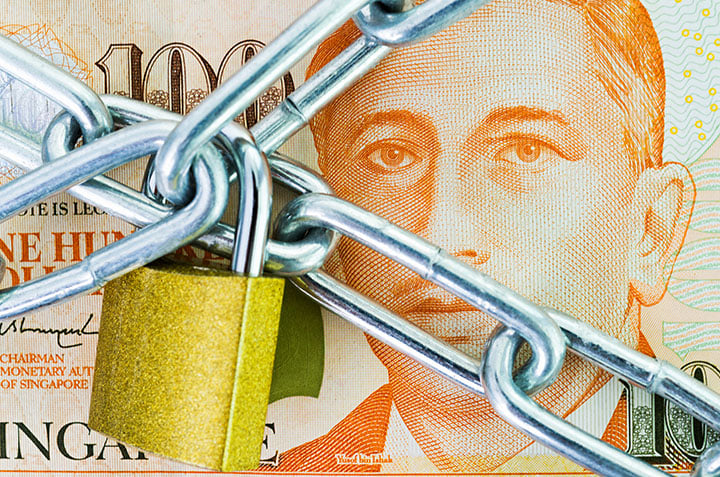The PSLE is under fire again, for the maths paper being too difficult this year. And maybe parents have a point: arranging triangles is as probable in your career as “9 to 5” jobs actually ending at 5 pm. So we have a more practical maths test for you – if you can pass this, you’re ready to own a house in Singapore:
Question 1: Say your BTO flat costs $280,000. How much cash will you need for the down payment using (a) an HDB loan, and (b) a private bank loan?
(Assume you will get the full loan amount)
Answer:
For HDB loans, it’s $28,000 in cash, CPF, or a combination of the two. The full HDB loan covers up to 90 per cent of BTO flat’s price, while the down payment is 10 per cent.
For bank loans, it’s $14,000 in hard cash, and then another $56,000 in any combination of cash or CPF. Bank loans, unlike HDB loans, cover only 75 per cent of the price, leaving a total down payment of 25 per cent. Note that an absolute minimum of five per cent must be paid in cash – you cannot take a loan to cover this.
Question 2: Say you earn $3,000 a month in fixed pay, and receive about $4,500 from your side business, because you don’t do stupid things like Multi-Level Marketing. What is the maximum size of your home loan, over a 25-year loan tenure?
(Note: Banks assume an interest rate of 3.5 per cent* for the purposes of these calculations. Also, you should assume you have no other debts.)

Answer:
From most banks, the maximum size of your home loan would be around $822,000.
First, note that the maximum size of your monthly loan repayment (plus any other debt repayments) is capped at 60 per cent of your monthly income; this is called the Total Debt Servicing Ratio (TDSR).
Second, note that the variable component of your income (the $4,500) counts as being 30 per cent lower ($3,150). Variable income is always subject to a 30 per cent haircut, for the purposes of TDSR calculations. So your total income would be considered $6,150 per month, for TDSR calculations.
$822,000, at 3.5 per cent over a 25-year loan, works out to around $3,690 per month. Putting aside other debts, bad credit score, etc., you could probably qualify for this amount.
*In practice, mortgage interest rates today are about two per cent.
Question 3: You’re trying to buy a resale flat, when someone upstairs manages to sell theirs for $1 million. Now your seller wants $600,000 for their flat. Assuming you agree, and the actual valuation comes to just $580,000, how much cash do you need to put down for the flat?
(Assume you use an HDB loan, and get the full loan)

Answer:
Too much ($78,000).
The HDB loan can cover up to 90 per cent of the flat price or valuation, whichever is lower. Now when you buy a resale flat, you need to agree on the price (i.e. put down the deposit) before HDB releases its official valuation.
So even though you agreed to pay $600,000, the loan will only cover 90 per cent of $580,000. Besides the down payment of $58,000, you will need to top up the $20,000 difference between the actual valuation and the asking price. So in all, you face a down payment of $78,000.
Note that $58,000 of this can come from a combination of cash and CPF (see question 1), whereas the $20,000 difference (Cash Over Valuation) must be in hard cash.
Question 4: Your mum’s property has a valuation of $1.3 million. She sells it to you at a token sum of $88, after you get married. What is the Buyers Stamp Duty (BSD) that you have to pay?

Answer:
$36,600. So you should uninvite at least 20 of your least favourite relatives from the dinner
The Buyers Stamp Duty (BSD) is calculated based on the higher of the valuation or price. In this case, it’s applied to the $1.3 million, not the $88.
BSD rates are as follows:
Question 5: You are 25 years old, and successful enough to buy a $1.5 million condo. Assuming you take a 35 year loan, you would just be 60 years old when the loan tenure ends. What percentage of your home can be financed by a loan?
Answer:
The maximum amount you can borrow, percentage wise, is called the Loan to Value (LTV) ratio).
Excepting factors like bad credit or debt, the maximum LTV in this case is 55 per cent, so you’d be able to borrow $825,000. Yes, that means a jaw-dropping $675,000 down payment. Why won’t you get the usual LTV limit of 75 per cent (see question 1)?
It’s because of the the loan tenure. To be clear, the maximum loan tenure for non-HDB properties is indeed 35 years. But if you want the maximum LTV, the loan tenure can only be up to 30 years, regardless of the actual maximum. In addition, the loan tenure must not stretch beyond the retirement age of 65. You need to fulfill both these criteria, in addition to some other requirements for full financing.
(For HDB buyers, the maximum loan tenure is 25 years).
Did you pass?
The biggest difference between the test of home ownership, and PSLE, is that with PSLE you get the lessons before the test. When it comes to home ownership, expect to run into bizarre and unforeseen situations fist, and then learn from them (i.e. the lessons come after the test).
One way to get around that is to follow us on Facebook, for the latest updates.
1 day ago · 6 min read ·
